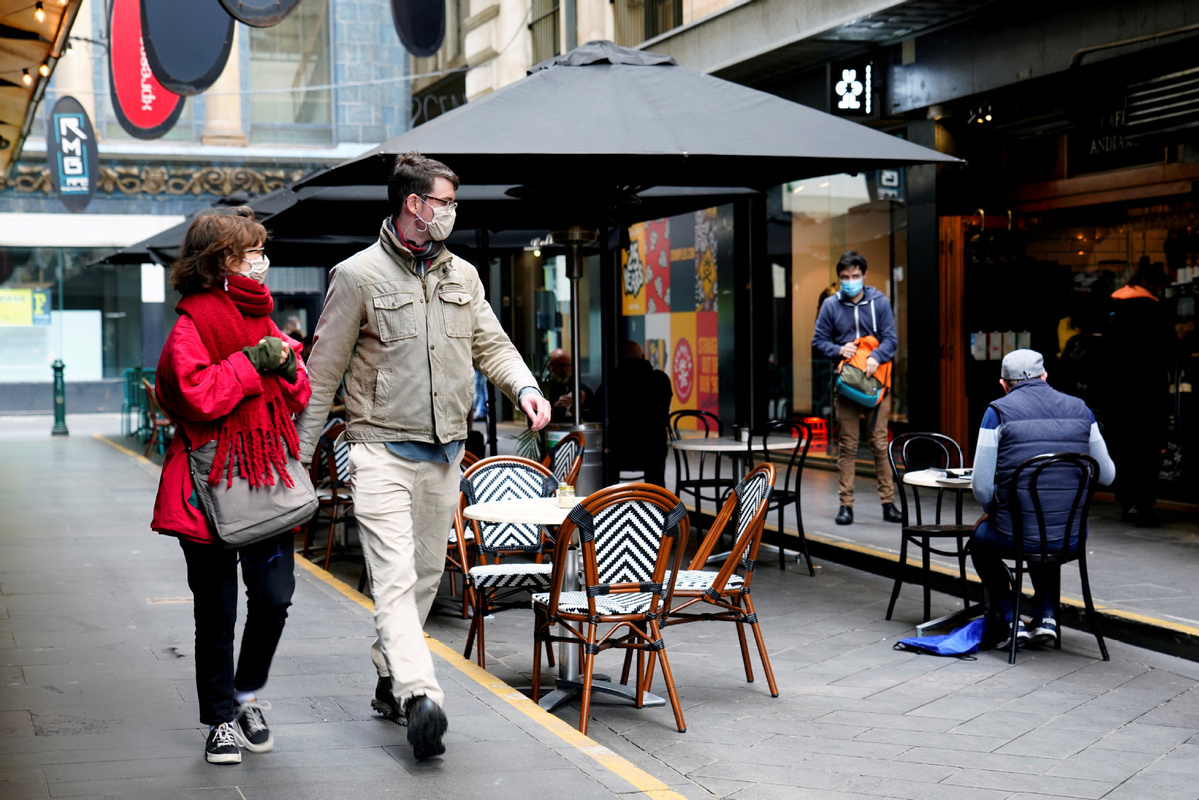
People walk past a cafe in Melbourne, Australia, Oct 28, 2020. (Photo: Agencies)
Supportive communities and an effective policy road map are behind the initial success of Australia in beating the second wave of COVID-19, analysts said.
Just over four months ago, the premier of Victoria state, Daniel Andrews, was facing a life or death dilemma: Either close the country's second-largest economy or let COVID-19 run rampant throughout the state, killing thousands.
While knowing it would not go down well with Victorians and would damage the economy, he chose the first option, as the alternative was not even worth contemplating.
Victoria was not alone. Every state in the country has locked down and beaten COVID-19. Australia has seen no cases of locally transmitted coronavirus for nearly a week. Some reported cases involve those who have returned from overseas and are in isolation.
"No other place in the world has tamed a second wave this large. Few have even come close," Stephen Duckett and Tom Crowley of the Grattan Institute, a public policy think tank, wrote in The Conversation on Oct 26."Victoria's lockdown has been hard, but it now occupies a rare and envious position."
Hassan Vally, associate professor in public health at La Trobe University in Melbourne, said the key to the lockdown's success was the support of the Victorian people.
Vally said the crucial lesson that was learned from the lockdown was how difficult it is to bring transmission under control once it has started to escalate."Make sure you don't get a resurgence of cases, and if you see any signs of this, then act quickly," he said.
Victoria began its lockdown in July when daily cases topped 700. Andrews has been heavily criticized for the way he has handled the lockdowns, which started with the state capital Melbourne.
Andrews was told by scientists and health experts that he would need to achieve a 14-day reporting average of fewer than five cases per day before even considering lifting some parts of the lockdown.
By Oct 26, the state had reached that target and Andrews began lifting restrictions-cafes, bars, restaurants and shops reopened and Melbourne came back to life.
Professor Adrian Esterman, head of biostatistics and epidemiology at the University of South Australia, said Andrews and his chief health officer, Professor Brett Sutton, have worked closely together, with the premier deferring to advice from his public health team.
"They have had at their disposal the results of very sophisticated simulation modeling. That allowed them to develop a road map of what to lockdown, and when and what restrictions to lift,"Esterman said.
'Vast majority'
He said the lockdown has had the support of the "vast majority" of Victorians, despite the mental and financial hardship it has caused and queries by some public health researchers about whether the measures were too arbitrary.
Asked about the secret to Australia's success, Esterman said that being an island helps, as it gives the government better control over its borders.
Infectious diseases specialist Sanjaya Senanayake, associate professor at the Australian National University's medical school, agrees that a factor in Victoria's success in fighting the virus was its road map.
"The road map was evidence-based, using mathematical modeling to estimate the impact of their strategies on numbers. And the people of Victoria appeared to comply," Senanayake said.


